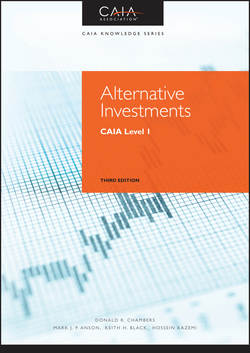Читать книгу Alternative Investments - Hossein Kazemi - Страница 52
На сайте Литреса книга снята с продажи.
PART One
Introduction to Alternative Investments
CHAPTER 3
Quantitative Foundations
3.5 Distribution of Cash Waterfall
3.5.3 Incentive-Based Fees
ОглавлениеIncentive-based or performance-based fees are a critical part of the compensation structure. Carried interest, as discussed earlier, is an incentive-based fee distributed from a fund to the fund's manager. The term carried interest tends to be used in private equity and real estate; the term incentive fee is more often used in hedge funds. Management fees are paid regardless of the fund's performance and therefore fail to provide a powerful incentive to produce exceptional investment results. Excessive and quasi-guaranteed management fees stimulate tentative and risk-averse behavior, such as following the herd. Consequently, the carried interest, meaning the percentage of the profit paid to fund managers, is the most powerful incentive to align interests and create value. The most common carried-interest split is 80 %/20 % (a.k.a. 80/20), which gives the fund manager a 20 % share in the fund's net profits and is essential to attracting talented and motivated managers. These fees are asymmetric, as a fund manager shares in the gains of the investors, but does not compensate investors for any portion of their losses. (Note that the following examples ignore management fees for the sake of simplicity.)
APPLICATION 3.5.3A
Fund A at the end of its term has risen to a total net asset value (NAV) of $300 million from its initial size of $200 million. Assuming no hurdle rate and an 80 %/20 % carried-interest split, the general partner is entitled to receive carried interest equal to how much?
The answer is $20 million. The answer is found by multiplying the GP's share (20 %) by the total profit ($100 million). The total profit is found as the difference in the NAVs. The NAVs are calculated after adding revenues and deducting expenses.
APPLICATION 3.5.3B
Fund B terminates and ultimately returns $132 million to its limited partners, and the total initial size of the fund was $100 million. Assuming a carried-interest rate of 20 %, the general partner is entitled to receive carried interest equal to how much?
The answer is $8 million. Note that if $32 million is the profit only to the LP, the total profit of the fund was higher. The answer is found by solving the following equations: LP profit = 0.8 × total profit; so $32 million = 0.8 × total profit; therefore, total profit = $40 million. The second equation is GP carried interest = 0.2 × total profit; therefore, carried interest = $8 million.
